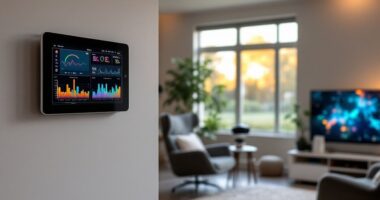As the global population continues to age precipitously, with adults over 65 projected to number 1.5 billion by 2050, technological innovations in senior care are revolutionizing the historically labor-intensive eldercare paradigm through multifaceted digital solutions.
You’re witnessing telehealth platforms notably reducing hospital visits while accommodating seniors with mobility limitations, resulting in more consistent health monitoring without the logistical burden of physical clinic attendance. These virtual care methodologies, when integrated with AI-powered analytics, generate data-driven insights that alert caregivers to potential complications before they manifest as acute conditions requiring emergency intervention. Community-based programs are emerging to enhance social engagement and overall wellness for seniors receiving long-term care.
Artificial intelligence applications have transformed reactive healthcare approaches into proactive management systems through predictive analytics that detect subtle physiological changes preceding health deterioration.
Predictive analytics now identify subtle physiological indicators before health deterioration occurs, revolutionizing eldercare from reactive to proactive intervention.
You’ll find AI algorithms customizing care plans based on individual health parameters, while virtual assistants facilitate medication adherence and appointment management, effectively reducing missed therapeutic opportunities. This streamlined communication between patient and provider, facilitated by AI chatbots, has demonstrably enhanced treatment protocol compliance rates among seniors with multiple comorbidities.
You can observe the integration of robotics providing unprecedented support through assistive technologies like smart walkers and exoskeletons that notably reduce fall incidents—the leading cause of injury-related mortality in seniors.
Companion robots address social isolation determinants, while task automation devices alleviate caregiver burden through medication dispensing and environmental monitoring functions that operate continuously without human fatigue factors. Virtual reality applications provide immersive therapeutic experiences that support both rehabilitation efforts and cognitive stimulation to combat mental decline in elderly populations.
Wearable technologies have established continuous essential sign monitoring capabilities, enabling real-time alerts for abnormal health readings and creating thorough datasets for longitudinal health trend analysis. These innovations reflect the significant shift to home-based solutions as seniors increasingly prefer to age in place rather than relocate to traditional care facilities.
You’re able to leverage these technologies alongside smart home systems featuring voice-activated controls for environmental parameters and medication management, connected health devices that detect nocturnal disturbances, and enhanced security measures that protect vulnerable seniors from external threats while preserving their independence.
These technological advancements collectively support aging in place while maintaining dignity and autonomy—priorities consistently identified in senior preference surveys.









